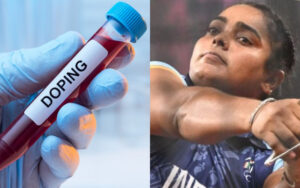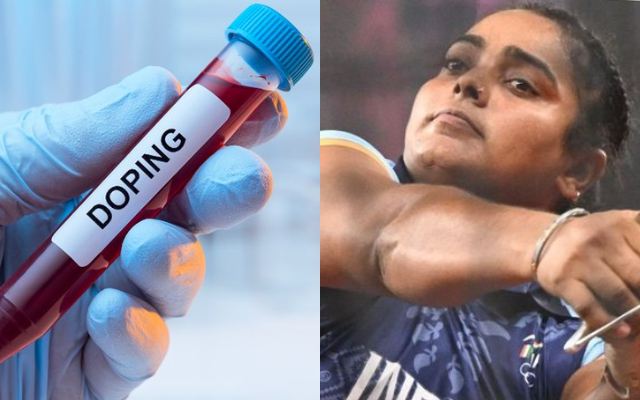
The Athletics Integrity Unit (AIU) placed Rachna, the 30-year-old Indian who finished ninth in the Asian Games women’s Hammer Throw competition in Hangzhou, on provisional suspension on Friday after she tested positive for multiple banned steroids – Stanozolol, Metandienone, Dehydrochloromethyltestosterone (DHCMT).
While Stanozolol and Metandienone have surfaced often in the Indian anti-doping landscape, DHCMT, known as Oral Turinabol, is infrequent. NADA website lists weightlifter Puneet Kumar in 2019 and Ajay Kumar (Volleyball) this year as those who have tested positive for DHCMT and have been sanctioned in the past 10 years by National Anti-Doping Disciplinary Panels.
DHCMT gained infamy as not only a drug originally manufactured in East German laboratories but also because it was the preferred drug of choice for dozens of doping cheats from a number of countries in the 2008 and 2012 Olympic Games as revealed by advanced retests on the stored samples many years later.
On June 19, Rachna won the National Inter-State Championships with a career-best effort of 65.03m in Bhubaneswar to secure a berth in the Indian team for the Asian Games. Her maiden National title, with the second-best throw ever by an Indian woman, came at the expense of national campers Manju Bala and Sarita R Singh.
At the Asian Games on September 29, Rachna produced a best of 58.13m to finish ninth out of 11 competitors. An indication of the sharp drop in her performance came in the AFI Indian Grand Prix 5 in Chandigarh on September 11 when she had a best effort of 60.71m.
AIU has not revealed when it collected Rachna’s sample that tested positive. A number of Indian sportspersons across disciplines were made to provide urine samples immediately on arrival in the Athletes Village in Hangzhou but the International Testing Agency conducted those tests for the Hangzhou Asian Games Organising Committee.
It is interesting that the National Anti-Doping Agency collected Rachna’s urine samples at least twice in September – first in an out-of-competition test in NIS Patiala on September 8 and then after she finished second in the AFI Indian Grand Prix in Chandigarh on September 11. It is not known yet if either of these samples have shown up positive.
Each step of AIU would have been taken with NADA in the loop. AIU would have taken time to do an initial review of the positive test, to see if Rachna has a Therapeutic Use Exemption or if there is an apparent departure from international standards for testing and investigations and international standards for laboratories and to see if the ingestion was through a permitted route.
Besides other steps, AIU would have given Rachna some time as well as an opportunity to explain the adverse analytical finding and to provide substantial assistance to admit the Anti-Doping Rule Violation and potentially benefit from a one-year reduction in the period of ineligibility. It would have assessed the validity of any such explanation before imposing the provisional suspension.
Since Rachna has already served a four-year ban for an Anti-Doping Rule Violation in 2015, Rachna now stares at an eight-year ineligibility period if she is unable to convince the adjudication tribunal that she does not deserve even a reprimand, let alone a ban, because the positive resulted from the consumption of a contaminated supplement.
Eight years ago, Rachna was banned for four years after she tested positive for anabolic steroid Methenolone at the National Games in Thiruvananthapuram. Representing Punjab, she finished second behind Sarita Singh but lost the silver medal due to the Anti-Doping Disciplinary Panel ruling on October 20, 2015.
Discus thrower Kamalpreet Kaur was the last Indian athlete to test positive in a case handled by AIU. She was handed a three-year ban by AIU in October last year. Navjeet Kaur Dhillon, another discus thrower and sprinter S Dhanalakshmi failed tests by AIU in 2022 and, like Kamalpreet Kaur later, agreed to three-year ineligibility periods each.




